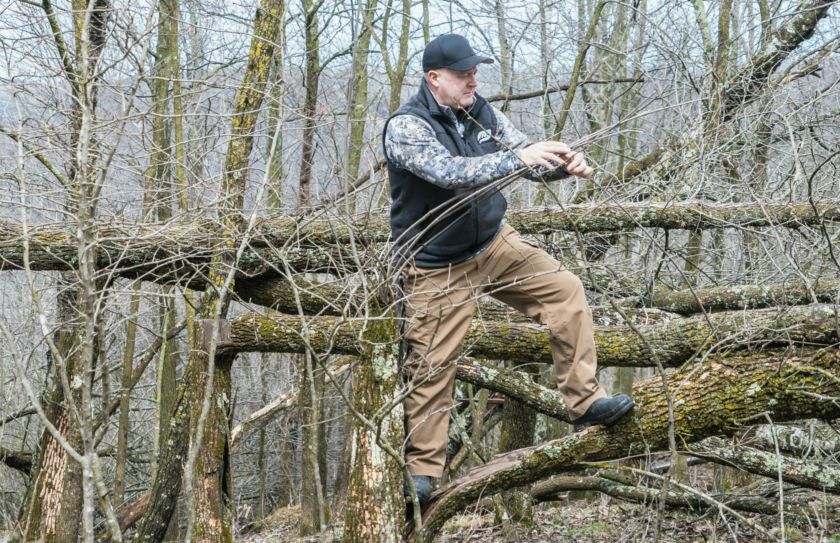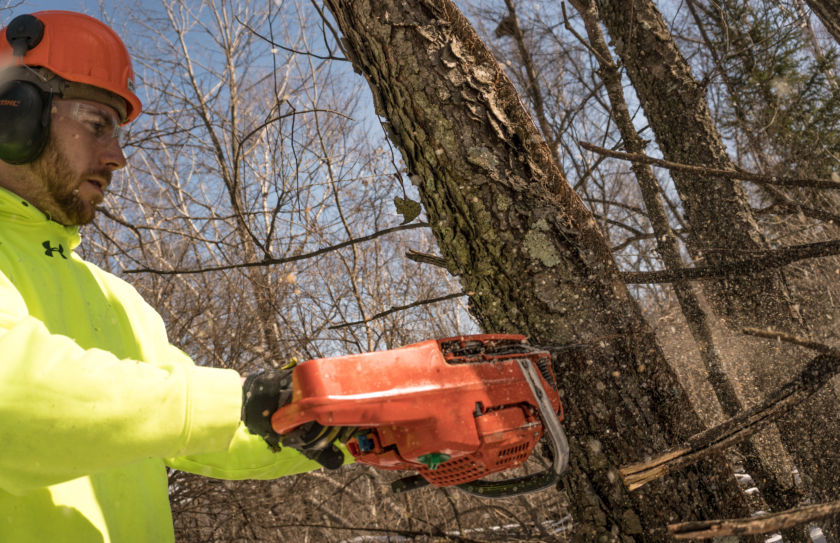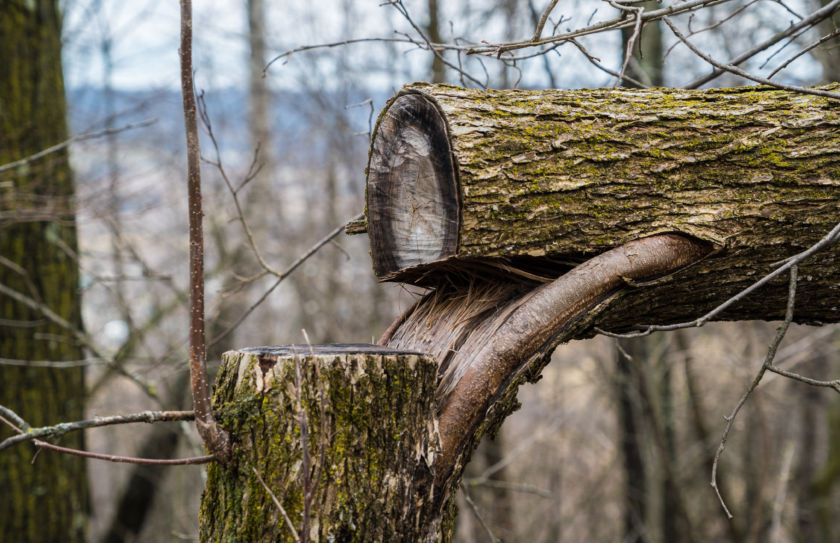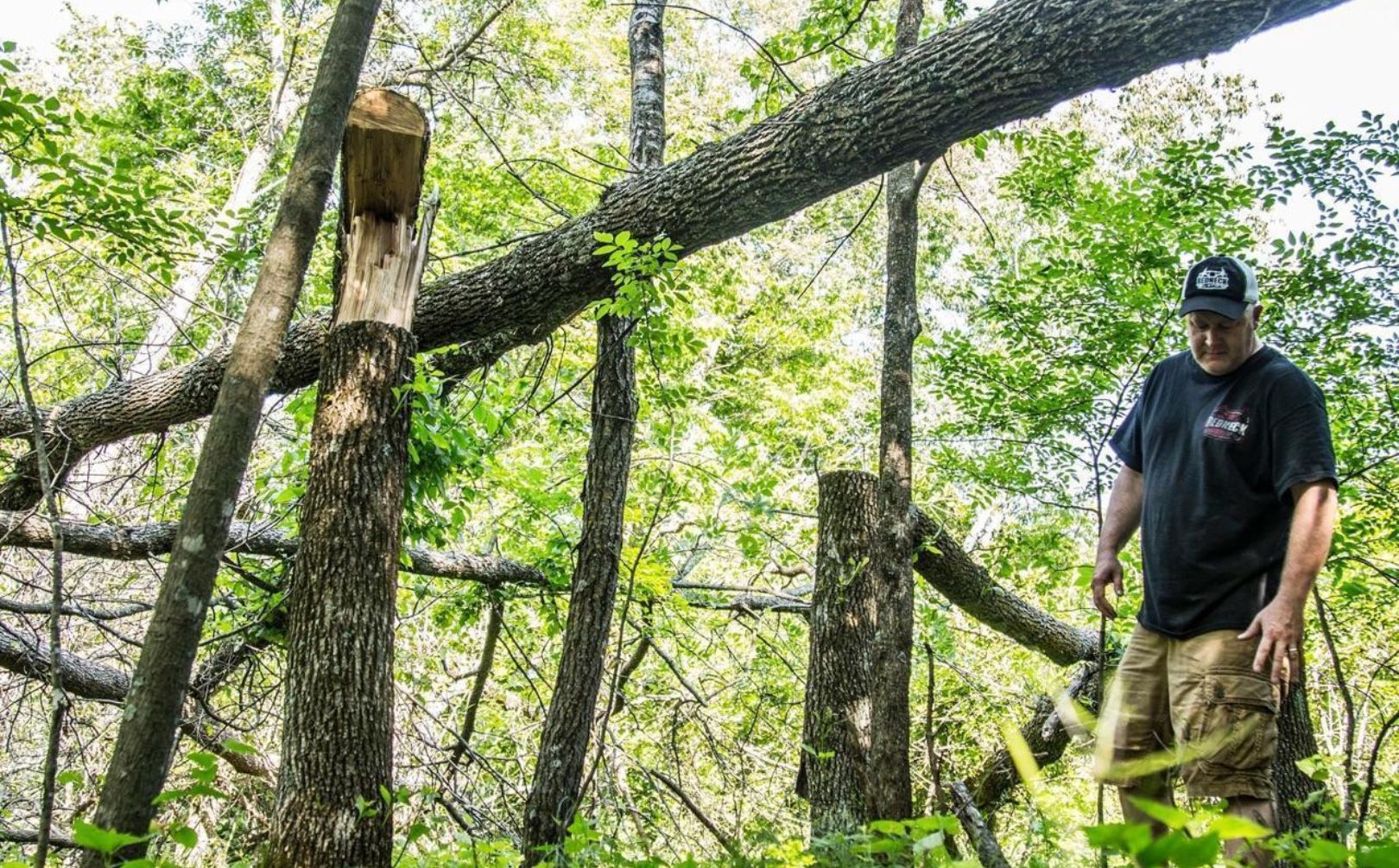
Have you ever hinge cut a tree for deer bedding? Then make sure not to miss out on your Summer hinge cut opportunities! So much strategy can be applied to your land during the hottest days of the year, primarily because much of the time the local whitetails are herded around major warm season food sources, which often places them well outside of their hidden and remote, preferred cool season haunts. However, whether deer are on your land or not, this is a great time of the year to make sure that your hinge cut game is running full steam ahead!
I am not going to lie to you, the months of Summer are not my favorite time to hinge cut, maintain bedding areas or climb up a tree. The truth though, is that this is a great time of the year to perform a huge variety of whitetail strategy tasks. My absolute favorite time of the year to hinge cut is during the Winter months, on a nice sunny day during a warm front. The cool, bugless, clean air hits the Winter blues square on the head with a much needed infusion of outdoor energy and the fresh buds and shoots placed at deer-level, offers a much need source of quality forage for the local herd. You can create powerfully double combo of whitetail goodness! But long after those brief days of cool season timber work, an opportunity is there for you to perform some much needed Summer hinge cut tasks.
*Strategy, strategy and more strategy; if performed correctly, hinge cutting provides an incredible amount of opportunity for advanced whitetail habitat junkies. For a detailed look of how to make sure you are doing it right, from Winter to Summer, we here are WHS are excited for you to check out the necessary hinge cut strategies covered in this video.
Summer Hinge Cut Bedding Checklist
Braving the bugs, heat and dense foilage is no feat for the faint of strenth and mental determination, but if you are into whitetails as much as I am, I would guess that you have both! So if creating bedding areas is a passion of yours, then here are some activities that you can make sure to complete, so that your Winter efforts are not held back by a lack of Summer sweat:
1) Hinge Cut Clean Up
Yes folks, it CAN be too thick for whitetails. However, if you didn't make too much of a mess during the timber cutting process, your Summer hinge cutting activities shouldn't be too difficult. In fact, I often simply use a quality hand saw to get the job done. A general rule of thumb is that your bedding areas is open enough if you can walk through it easily without having to climb, crawl, stoop or slither. Also, attempt as best as possible to eliminate "dead ends" within your cuttings. Deer hate to feel cornered and trapped, so make sure your bedding area is open enough to give the local whitetails the necessary maze and escape movements they crave.
Deer also becomes accustomed to a sense of scale depending on the region you live in. Whitetail habitat that is lean and lacking within high % ag areas, creates deer herds that tolerate close proximity to each other, as well as deer that are more willing to climb, crawl, stoop and slither. When it comes to large wooded areas though, deer require a lot more space! In a large wilderness setting your bedding areas should allow you to drive an ATV through with several escape routes for deer. In large ag areas, your bedding area movement can be confined to the size of a walking path. Try to keep in mind the necessary scale of bedding areas that needs to be applied in your area.
2) Defined Treestand Routes
Although I may or may not hunt right alongside my hinge cut bedding areas, I definitely keep in mind exactly where deer are likely to enter or exit the location. In fact I typically will not create my best bedding areas, unless they relate to specific stand locations that I am attempting to install and enhance. A 1/2 acre bedding area may have many small and narrow ways to get in and out of, but typically only 3-4 real high quality, highly defined travel corridors that enter and exit. I make sure that those 3-4 deer trails are heading right towards a tree stand.
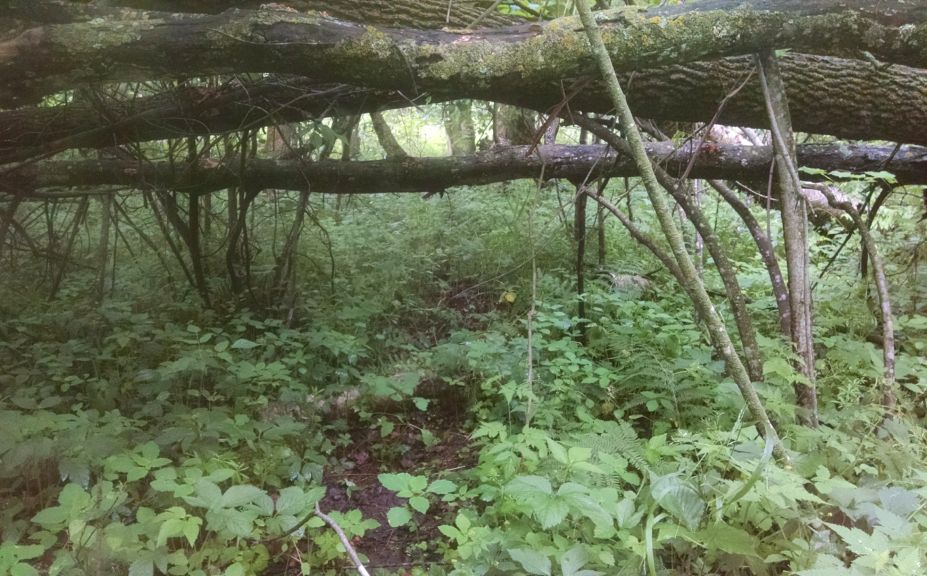
*Can't get enough hinge cut bedding area advice? Then make sure to check out,"Strategy Guide for Whitetail Hinge Cuts".
3) Canopy Correction
Creating canopies in a deer bedding area can seem pretty cool on paper, but folks they aren't really necessary. A great motto to live by is that, "You can have a great bedding area without a canopy, but you can't have a great bedding area without side cover". In fact many even have to leave a log within their canopy bedding areas because of the lack of side cover. At least with a log a deer has some form of side coverto relate to. The Summer months are a great time to make sure that you aren't over-canopied. Canopies cave in, block deer movement, create dead-ends and often become an unecessary addition to all of your hard work. In fact in many high % cover areas, deer will actually avoid canopies. Remember, deer don't need to hide from airplanes and birds however, they need to hide from you and other predators.
4) Enough Side Cover?
Side cover is king, when it comes to any deer bedding area, let alone a hinge cut bedding area. If you can sit inside your bedding area and see outside of it for 20-30 yards or more during mid Summer's growth, then you may need a lot more side cover. The best way to create adequate side cover for your hinge cut bedding areas is to hinge to the outside of the area, instead of to the inside of the cutting. Open sky within your bedding area is not a determination of if your the location will be attractive or not, but enough side cover certainly is. A great Summer hinge cut activity is to create waist high hinge cuts on the outside of your bedding area, to make sure that the deer you are attempting to hide within, are actually hidden.
5) Summer Hinge Cutting (Yes, it could be time formore!)
As long as you are considering the potential of Oak Wilt, the Summer months can be a great time of the year to hinge cut. Even some large canopy removal can create both horizontal cover on the forest floor with large log and top debris, as well as some mid to late Summer forage growth that deer will apprecaite heading into the Fall and Winter months. Although not as comfortable as a time of the year, don't forget about the opportunity to create some deer habitat during the Summer months.
Should you worry about Oak Wilt? Yes! Oak Wilt is a common disease caused by a fungus that prohibits water from moving through an oak tree. It can be spread from tree to tree by a sap feeding beatle. If you have oaks on your land, you need to wait at least until July to begin Summer hinge cut activities. The State of WI has this to say aboutcutting Summer oaks where Oak Wilt is a concern,"Oak trees are most easily infected by overland spread in the springtime from bud swelling until two to three weeks past full leaf development. The Wisconsin DNR recommends that you avoid pruning, cutting or wounding oak from April through July in urban areas. Observations and unpublished research have shown that overland infection can occur after July, yet these mid-summer through early fall infections are not common. To take a very cautious approach, do not prune or otherwise wound oaks from April to October."
Do you have some Summer hinge cut work to do?
Maybe it is the fact that early archery season is only several weeks away, but during the Summer months I have a hard time staying out of the woods, regardless of the level of bugs and sweat. If you are a hinge cutting maniac, make sure to use this time of the year to make sure your bedding area strategies are heading in the right direction. Although most timber deer cuttings tend to take place during the Winter months, it pays to keep in mind that at little Summer sweat can equal a lot of Fall rewards.
